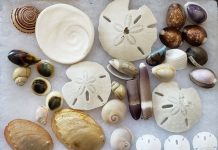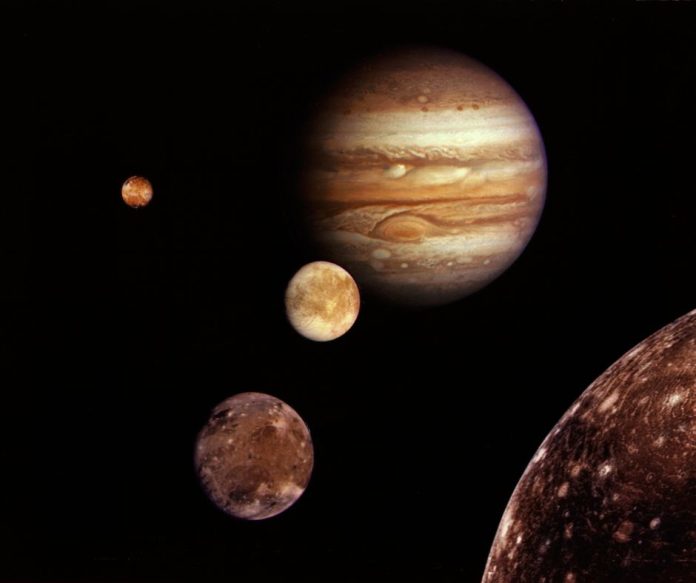
Jupiter’s moons are now being looked at as places that may sustain life, specifically the smallest moon, Europa. For half a century, scientists thought Mars was once the place where life might exist outside our own planet. We pictured everything from sophisticated Martians to tiny microbes living on the red planet. As it turned out, life on Mars has been elusive, prompting scientists to look elsewhere. This is where Europa comes in.
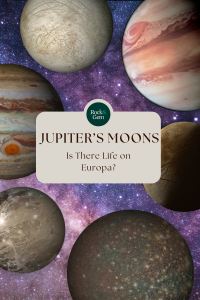
About Europa
Jupiter’s moons include four large moons orbiting the giant gas giant. The smallest, Europa appears to be the place in our solar system most likely to sustain life. Although it is 500 million miles from the sun—more than five times as far as Earth—Europa has geological elements that have much in common with our own planet, making it potentially hospitable to life as we know it.
Europa is similar in size to Earth’s moon and has a fascinating environment that makes it unique in the solar system. Unlike any of the planets that orbit the Sun, Europa is considered an ocean world, meaning a sea of saltwater lies beneath the ice that covers the moon’s surface.
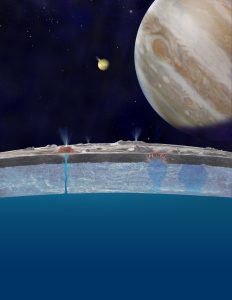
All photos courtesy of NASA
Ice & Rocks
The ice shell on the surface of Europa is 40 to 90 million years old and is the smoothest of any solid body in the solar system. As it orbits around Jupiter, Europa is subject to strong tidal forces that cause this icy surface to flex and crack, leading to the creation of ridges, bands, pits and domes. Thought to be about 10 to 15 miles thick, the ice shell that covers the moon is believed to be tectonically active, allowing for cracks in the ice where the water below can come to the surface. When this occurs, the material on the surface of the moon may enter the ocean, adding to the chemical makeup of this large sea, which is estimated to be 40 to 100 miles deep.
Just like the Earth, Europa has a rocky interior that lies beneath the ocean surface. As gravity from Jupiter causes Europa to flex, some of that ocean water may seep into the uppermost portion of the silicate layer. Here it is heated and can interact chemically with the water. As that water flows back into the ocean through cracks, fissures and hydrothermal vents, it takes minerals and carbon-based organic compounds with it when it flows back into the sea. This process could supply the ocean with the building blocks for life, and with materials that can serve as food for simple organisms.
Beneath its rocky interior, Europa’s heated core is believed to be made up of metallic material rich in iron and nickel. The moon also has an oxygen atmosphere, although it is much thinner than that of Earth. This pure oxygen atmosphere is not likely to be produced biologically, like ours, but rather by charged particles that hit the moon’s cold surface.
An Unusual Surface
Scientific knowledge of Europa’s icy shell and underlying ocean first came from the Voyager spacecraft, launched in the late 1970’s to study Jupiter. The images from these missions showed Europa to have a surface brighter than that of Earth’s moon. It was crisscrossed with numerous bands and ridges, and with a surprising lack of large impact craters, tall cliffs or mountains. This was unusual because most other icy moons in the solar system are rich in these surface features.
On the contrary, Europa’s surface was smooth and was covered with dark bands that had opposite sides that matched each other like pieces of a jigsaw puzzle. It appeared that these cracks had separated, and dark, icy material had flowed into the opened gaps. This suggested to scientists that Europa’s surface had been active at some time in the past. A lack of large impact craters suggested that the moon’s surface was relatively young and that icy, volcanic flows, or settling of the icy crust under its own weight, had erased whatever impact craters had been created by meteors that had struck the moon.
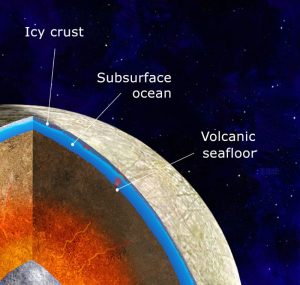
Fracture Patterns
Researchers analyzing Voyager data also noticed that the patterns of some of the longest linear features on Europa’s surface did not fit predicted patterns of fractures that should be created by orbital tides. Instead, they believed the patterns could have been created if the moon’s surface could move independently and was not locked to the rest of the interior. This could be the case if a layer of liquid or slightly warmer ice existed between the crust and the deep interior.
Along with this theory came evidence that Europa might have a warm interior, suggesting a global subsurface ocean with a rocky sea floor.
In 1989, the Galileo spacecraft was launched to continue study of Jupiter, reaching the planet in 1995. The mission provided even more details on Europa’s geology. One of the most important measurements showed how Jupiter’s magnetic field was disrupted in the space around Europa. This measurement pointed to the likelihood of a special type of magnetic field being induced within Europa. This could be caused by a deep layer of electrically conductive fluid beneath the surface. Because Europa has an icy composition, the material most likely to create this magnetic signature is a global ocean of saltwater.
Jupiter’s Moons
Jupiter is the largest planet in our solar system and also has the most moons. Scientists have documented a whopping 95 moons circling the gas giant, with the likelihood of more yet undiscovered.
Only four of Jupiter’s moons are as large as our moon or close in size. Called the Galilean moons, they are Io, Ganymede, Callisto and Europa. Europa is one of the smaller moons, yet it is the most intriguing because of its unique geology.
The moon closest in size to Europa is Io. Io is the moon orbiting nearest to Jupiter and is the fourth largest satellite of the giant planet. But unlike Europa, Io contains virtually no water. In fact, Io is believed to have the lowest ratio of water of any object in our solar system. It also has a high density and the strongest gravity of all Jupiter’s moons. Covered with active volcanos that shoot lava dozens of feet into the air, Io is the most geologically active object in the solar system. Its surface is believed to be made from molten sulfur or silicate rock. Its thin atmosphere consists primarily of sulfur dioxide.
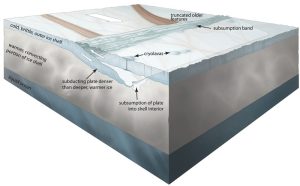
Ganymede & Callisto
The largest of Jupiter’s moons—and in fact the largest moon in the entire solar system—is Ganymede. Bigger than the planet Mercury, Ganymede is thought to have a great deal of water under its surface. In fact, scientists believe Ganymede’s underground saltwater ocean contains more water than the Earth’s entire surface. Ganymede also has a magnetic core that gives the moon its own magnetic field, which causes auroras much like Earth’s aura borealis. Its surface terrain consists of large, bright regions of ridges, along with grooves that slice across older, darker terrains. This suggests that Ganymede’s crust is under tension from global tectonic processes. As for the atmosphere, the Hubble Space Telescope recently found evidence of a thin oxygen layer around this moon, believed to be generated by Ganymede’s icy surface.
Of Jupiter’s moons, the second largest is Callisto which is actually is the third largest moon in our solar system, and its surface is the most heavily cratered of any object in our solar system. Once believed to be only made of rock and ice, recent research has found evidence of a possible salty ocean deep beneath Callisto’s surface. If this ocean does exist and contains certain compounds from Callisto’s rocky crust, this large moon also has a potential for life.
While the three of Jupiter’s moons appear to have saltwater oceans that might sustain life, scientists have chosen Europa for in-depth study. Europa not only has an ocean, but it also contains carbon, hydrogen, nitrogen, oxygen, phosphorus and sulfur—the building blocks of life.
This story about Jupiter’s moons previously appeared in Rock & Gem magazine. Click here to subscribe. Story by Audrey Pavia.


